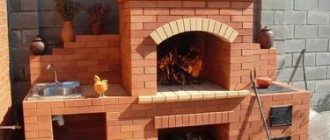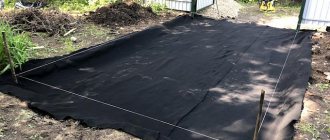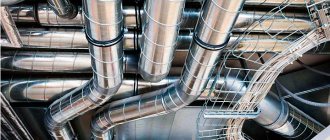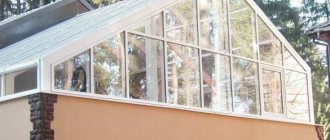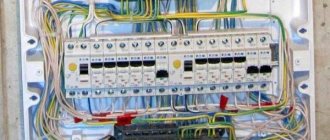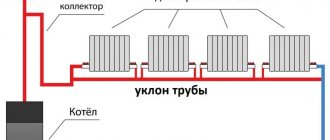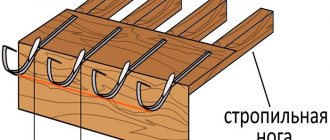Natural factors, lack of investment, and annual aging of fixed assets of power supply systems often lead to breakdowns and power outages. This usually happens in small towns and rural areas. Therefore, for a country cottage it is necessary to provide a backup source of power supply. In a modern home, everything functions using electricity. If the boiler room or water supply is turned off in the absence of the owners, in winter, during frosts, significant damage will be caused to the cottage. Therefore, it is impossible to do without a backup power supply for a country house. It is necessary when voltage surges in the network are higher than normal. Stabilizers cannot cope with them, household equipment fails. A reliable uninterruptible power supply or inverter will automatically maintain the set value.
Types of backup power
When you are planning the power supply for your country house, you have two options: make your own completely autonomous system or connect to the main power grid, which is used by all houses in the area, and equip a backup source of electricity in case of interruptions. The latter will ensure the operation of heaters, boiler, pump, refrigerator - everything that you connect to it. But it is not used for weeks and months, this is a temporary solution.
Depending on how long the main electrical system is turned off, you need to choose what your backup circuit will consist of. An internal combustion engine with automatic start will last approximately 10 hours per month. A rechargeable generator, complete with batteries and an inverter, is suitable if there may be no power for several days in a row.
- Technique
How to choose an electric generator for your home: important parameters
Solar panels
Nowadays, solar power sources are becoming increasingly popular. The essence of such a source is simple - there are semiconductor photocells in which an electric charge is generated when sunlight hits them.
The amount of energy generated directly depends on the area of the photocells, so they are collected in panels.
Panel with an area of 1 sq. m. capable of delivering 100 watts of power with a voltage of 20-25 V.
To fully provide the house with electricity, the area of the panels must be large.
Among the positive qualities of such a source of electricity is its durability, complete environmental friendliness, and noiselessness.
The panels require minimal maintenance, and the electricity they generate is completely free and accessible.
But there are also disadvantages. To provide the required amount of electricity, the area of the panels can reach significant sizes, which still need to be positioned correctly.
This energy is fickle. On sunny days the panels will work at maximum output, but there are also cloudy days. Therefore, the total amount of generated electrical energy depends on how many sunny days a year are in the region where the house is located.
Another drawback, and a significant one, is the cost of the panels. The price for each Watt of generated energy is now approximately $1.5, that is, only for panels generating 1 kW of electricity you will have to pay $1.5 thousand. You will also need to buy the rest of the equipment necessary for the system to operate.
Also read how to make solar-powered lighting for your garden.
Necessary equipment
Instagram: @vint_dizel_nsk
Instagram: @eduard_deryabin
Instagram: @ps.kz
Engines and generators can run on gasoline, natural or liquefied gas and diesel fuel. Recently, the popularity of solar panels has been increasing, but in private homes in Russia this technology is still very rarely used, so the cost of such equipment is quite high.
Gas generators are cheaper to use, designed to last a long time and are less harmful to the environment. Gasoline generators are more compact, but do not last as long as gas generators. In addition, they will require an air or water cooling system. A diesel generator is quite noisy, but can be very powerful and can last for several days of uninterrupted operation.
Another important point to consider when purchasing equipment is the type of output voltage. Try to purchase equipment with sinusoidal (alternating) voltage; it will protect your equipment from burnout due to surges and surges in electricity.
Inverter boiler for home heating
For those areas where there is no access to a gas main, one of the best ways to heat a home is to purchase electrical equipment. Electricity is the type of fuel that is present in every home.
In addition, you do not need to prepare special documentation and permits to install the device on electricity. Boilers of this type are affordable and compact in size.
If you look at it from the point of view of electricity consumption, then many owners are scared off by its high cost according to the tariff plan. But despite this, manufacturers of heating systems strive to increase the efficiency of installations and reduce heat loss. Therefore, one of the most promising devices for heating a home are inverter boilers.
Below we will consider the operating principle of an inverter boiler, the disadvantages and advantages of its use, as well as the organization of this heating system.
Inverter heating boiler
Operating principle of an inverter boiler
Traditional electrical equipment operates on the principle of transferring energy directly to the coolant through heating elements. At the same time, if the device is equipped with heating elements, then, therefore, you need to prepare a place for heating water.
Heating elements are also highly susceptible to corrosion, so they must be protected from irreversible processes.
Inverter equipment operates on the basis of electromagnetic induction. The current itself is generated due to an alternating magnetic field. For this purpose, it is necessary to convert direct mains current into alternating current. An inverter, which can operate both from the mains and from batteries, copes with this task perfectly.
There are two types of circuits in an inverter boiler:
- Magnetic, allowing you to generate an alternating magnetic field.
- A heat exchanger that helps heat the coolant.
With appropriate supply of alternating electricity, the coil begins to form a magnetic field. This helps to heat the liquid in the system and further transfer it through the pipes.
Induction heating system diagram
Pros and cons of an inverter boiler
There are a number of advantages that inverter installations have, including:
- increase in operational parameters as a result of the absence of heating elements,
- slight inertia when heating, thus, if there is a centrifugal pump, the coolant will heat up faster,
- the operation of the system is not affected by the chemical composition of the coolant,
- the ability to install the device anywhere.
Like other heating systems, the inverter boiler has several disadvantages:
- quite high cost of inverter equipment compared to similar devices operating on heating elements,
- has impressive dimensions and weight, and therefore requires strengthening the base on which the boiler will be located,
- The device requires an electronic control system for subsequent power adjustment.
Despite minor shortcomings, inverter boilers are still very popular among consumers and the demand for them is constantly increasing.
Inverter equipment design
Organization of inverter heating
Inverter boilers are widely used not only for domestic but also for industrial needs. The first ones are compact in size and can operate using batteries. As for industrial installations, they are voluminous and have enormous power.
Tip: If you are planning to install an inverter boiler, then you need to carefully design the entire heating system.
When operating heating equipment, the load on the electrical network will increase significantly, so all gaskets and connections must be made with a large cross-section.
Inverter heating system
Particular attention should be paid to the safety of the boiler, which should be ensured properly. It is necessary to additionally install a protective unit for automatic de-energization in case of voltage surges
Connection
Instagram: @ru_electric
Instagram: @ru_electric
Most often, manufacturers offer their specialists to install the system, because it is not easy for a beginner to understand electronics and want to avoid mistakes. The electrician will install the generator in the basement of the house or in the utility room and run the cables into the panel. Electricity flows both from the backup system to the house and from the main system to the backup system to, for example, charge batteries. This will set the automatic switch. That is, when the main system turns off, the backup system will start working on its own without your intervention. Therefore, even if you are not at home, basic appliances like a refrigerator, pump or heater will work.
Sometimes the power source can be a car. The inverter is connected to the terminals of a warmed-up and switched-off engine, after which the car is started again, the load is connected to the inverter and it is turned off again. After this, the car begins to charge the batteries.
- Gas and energy supply
How to make electrical wiring in a wooden house
Inverter heating of a private house
Inverter heating systems are gradually gaining popularity
The main life support system in any home is, of course, the heating system. Without it, it is difficult to imagine the normal life of a modern person, especially in the Russian climate. The choice of heating system is important both from the point of view of efficiency and from the point of view of economy. After all, most often this system is operated for more than 6 months a year, and in some places all year round. Installing an inverter heating boiler is a good alternative to other heat sources. Electricity is available almost everywhere in our country (unlike, for example, gas). And the use of electric heating devices is often very important, despite the high cost of electricity. Therefore, the latest developments by scientists are aimed specifically at modernizing electrical equipment in order to increase its efficiency and reduce the cost of produced heat. Inverter heating has a number of characteristic features compared to other types of electric heating. Let's take a closer look at them.
Installation of an inverter heating boiler
Diagram of the inverter heating boiler
The boiler heats the coolant by converting the energy of the electromagnetic field into heat. Each boiler has two circuits: magnetic and heat exchange. The first is a coil of conductor on a dielectric - copper wire wound on a pipe. An electromagnetic field is generated in a magnetic circuit. This field acts on the steel core, which is located inside the heat exchange circuit and directly heats the coolant. Electric inverter heating boilers are quite a promising type of electrical equipment, which is used both on an industrial scale and in everyday life.
Pros and cons of electric inverter heating
Inverters are equipment that converts direct current into alternating current. Inverter boilers operate on the principle of electromagnetic induction. This is their main difference from heating element boilers. And from here follow the main characteristics and features. Like any equipment, inverter equipment has its own functional characteristics.
Do-it-yourself inverter heating installation
Inverter heating boiler
So, you have decided to install modern electrical equipment in your home. In order to save money, you can do some of the work yourself. After purchasing an inverter boiler, the required number of pipes and radiators, you can begin installing the heating system. Since no one is immune from power outages, you need to take care of the possibility of your system operating in such force majeure mode. Inverter heating batteries are used for this purpose, the price of which is quite high, but in the long term their use turns out to be economically justified.
Equipment shutdown in the event of a power outage can go unnoticed by the owners if there are inverter heating batteries. Within 10 milliseconds, the automation will switch the equipment to backup power supply and heating of the home will continue. If the power supply to the network is restored, the same automation will carry out the reverse procedure, and the boiler will be transferred to normal operation. This is especially true if you need to maintain a constant temperature in the house and there is no way to monitor it personally.
Electric inverter heating batteries can be purchased in addition to the basic package. Their use will increase the operating time of the system in offline mode.
Using autonomous power supplies
During operation, it may periodically be necessary to switch the heating system to an alternative power source. Converting the system to battery power is much more convenient than using a generator. Whatever fuel the generator requires, it will be necessary to organize its delivery, storage and refueling into the generator. While the transfer to battery power (and vice versa) will occur without personal human intervention. In addition to the fact that this method is more environmentally friendly, it is also more economically justified, despite the significant initial investment.
Principle of operation
Instagram: @econrj.ru
Instagram: @econrj.ru
The backup system, consisting of batteries and a generator, operates in two stages. When your electricity goes out, your equipment begins to receive energy from batteries. After they are discharged by half or more, you turn on the generator.
When the main system starts working again, the spare system will turn off and the batteries will begin to recharge.
UPS models
Energy PN-1000 is a powerful source of backup power. Thanks to the built-in stabilizer, the device provides the rated output voltage when the mains voltage changes within the range of 120-275 volts. The smooth sine waveform is ideal for powering a reactive inductive load, such as a heating system pump motor. The energy of the PN-1000, together with the Delta DTM 12100L 100A/h battery, provides uninterrupted power for a 150W heating pump for 8 hours. The device has a built-in network noise filter, information display and RS-232 interface.
You can find this and other voltage stabilizers for heating systems from the Energia company on the website of the official representative of the Energia.ru company.
The compact emergency power source Teplokom 222/500 is designed for use in gas heating systems. This simple device with a single-phase relay-type stabilizer ensures operation with a load not exceeding 230 W. The universal stabilizer Skat ST 1515 provides a voltage of 220 V with network fluctuations from 145 to 260 V and a frequency of 50 Hz ± 1%. If the voltage value exceeds the specified parameters, the load will be turned off automatically.
Let's sum it up
Based on the operational requirements for electric motors of heating system pumps, the UPS must provide the following parameters:
In addition, the device must operate in a certain temperature range and have a device for indicating modes and physical quantities.

